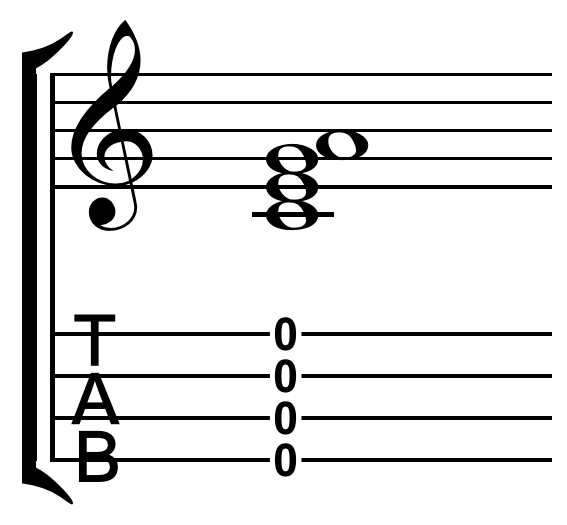|
Ukulele(尤克里里)简称Uke,在英国等地则拼为Ukulele,归属在吉他乐器一族,通常有四条弦。“ukulele”在英汉词典中的解释:n. (夏威夷的)尤克里里琴,四弦琴。
Ukulele寓意:在夏威夷语中, Ukulele的意思是“到来的礼物”—— uku(礼物),lele(到来),读作: {oo-koo-ley-ley}。十九世纪时,来自葡萄牙的移民带着Ukulele来到了夏威夷,成为当地类似小型吉他的乐器。二十世纪初时,Ukulele在美国各地获得关注,并渐渐传到了国际间。

Ukulele音阶
一般定音为GCEA, 也有ADF#B的调法,具体为:
类型 宽度 长度 定音
soprano (标准)33 cm 53 cm g'c'e'a' 或a'd'f#'b'
concert 38 cm 58 cm g'c'e'a'
tenor 43 cm 66 cm gc'e'a', 或d'gbe'
baritone 48 cm 76 cm dgbe'
Ukulele调弦:首先把吉他平放在你的大腿上,靠近你身体的那端为第四弦,以此类推,向外的就是一弦了。第三条弦是C,你可以用钢琴定C的音,于是乎三弦上第四个品就是E啦。用左手按住第四品然后把二弦调到跟E同一音高就ok了。第二条弦定音完成后,按住二弦的第三品,把第四条弦(也就是最靠近你身体的那条)调至相同的音高即可。最后按住第四条弦的第二品,把最靠外的一弦调到相同的音高就完成调音啦。
Ukulele的制作材质
公认的最适合制作Ukulele的材料是产自夏威夷的稀有硬木树种 Koa (Acacia koa), 称作夏威夷寇阿相思树木,浅棕色,木纹路漂亮,高档的呈现火焰状纹路。它有类似桃花心木(mahogany)般温和的声音,但是他的高频要比桃花心木突出一些。Koa比Mahogany密度高,所以音色较亮,低频较弱。由于木质油性,高频亦稍为减弱。总括而言,Koa 音色较着重于中频,高频顺滑而compress,低频清析但较弱。与其它木材比较,Koa 音色中的 fundamental tone(基音)较强,dynamic 较少而且较compress。在大力弹奏的时候,音质甜美。这种木头必须弹奏几年后,音色才会呈现出来。颜色略嫌过亮,就像胡桃木(walnut)含有过多的油脂,用其作吉他,颜色为深褐色,多不上漆以保持它的特殊。但是喷漆后的外观也相当美丽。
Ukulele演奏
"Ukulele"又名"四弦琴,.琴品有"12"17"19"...琴的面版多为"红松",背版"玫瑰木"...产自"Hawaii"的"Ukulele"背版选用好材料. "Ukulele"可以合奏,重奏,也可独奏,演奏花样繁多,基本定弦为" G.C.E.A",较早期也有定为"A. D.F.#B",琴弦为"尼龙弦",(Itlay,aquila的弦不错,同时也生产古典吉他弦),右手演奏时可留指甲或不留,演奏姿势将琴体轻松贴靠在前胸.
Ukulele历史沿革
1879 年,葡萄牙的的专业手工艺人和乐器制作家Manuel Nunes 和Joao Fernandes 还有 Augustine Dias来到夏威夷群岛。他们作为移民在甘蔗田作业。同时他们发明和发展了来自他们家乡本土的琴。夏威夷人不仅惊讶于这种琴音色的优美,还惊讶于演奏者的手指在指板上的快速的移动。从那时起,夏威夷人就把这种琴称作Ukulele,意思是跳跃的跳蚤。不管Ukulele琴背后真实的故事是什么,它成为了夏威夷最流行的乐器。这主要归功于上面所提到的三位手工艺家。Ukulele琴还收到了来自皇家和贵族的推崇,例如国王Kalakaua,皇后Emma和皇后Lili'uokalani,他们都弹奏过Ukulele琴。从而,使Ukulele琴得到了更多夏威夷人的接受,从渔民,芋头种植者,到国王,皇后,大家都喜爱学习和演奏Ukulele琴。大约在1915年左右,Ukulele琴风靡到了北美大陆。夏威夷音乐袭击了旧金山市,随即横扫全国,刺激了Ukulele琴在北美大陆的销售。这股旋风还穿过大西洋刮到了英国。Ukulele琴巨大的需求带动了对Ukulele琴制作家的需求。到了1910年,三位原葡萄牙制作家中,只有Manuel Nunes还尚在。订单多到他一个人无法应付。年轻人Samuel Kaialiilii Kamaka开始跟Manuel Nunes学徒。新的竞争者也加入到Ukulele琴制作中来,带动了Ukulele琴设计和音质的革新。其中的一位竞争者,Kumalae,开了新工厂,可月产三百把琴。尽管有了竞争,生意还是多到订单满天飞。
到了1915年,来自美国大陆的竞争者也加入到Ukulele琴制作中来。夏威夷人对此感到非常气愤和失望。因为这些美国大陆的公司都将琴刻上夏威夷制造的字样。夏威夷人进行了反击,他们设计了不同的商标标示,此标示得到了法律的保护。夏威夷Ukulele琴制作家得到授权可以在Ukulele琴上注明“美国夏威夷制造”的字样。这就将那些非夏威夷群岛生产的Ukulele琴区别了出来。在二十年代,美国大陆的制作家, 像Gibson, Harmony, Regal, National, Dobro和Martin,大批量的生产了数以千计的Ukulele琴。在Manuel Nunes的设计基础上,马丁淤1916年制作了第一把Ukulele琴。许多夏威夷人都称赞马丁的Ukulele琴,称它为当时Ukulele琴的音质典范。在Bounty Music上,我们还可以有幸地看到为数不多的几把这样的琴。到了四五十年代,英国伟大的George Formby和美国Arthur Godfrey继续着Ukulele琴的发展,使之仍在美国主流乐器内。像Roy Smeck 和 Eddie Karnae这样伟大的演奏家还继续演奏Ukulele琴。但是,到了六十年代后期的Tiny Tim时代,Ukulele琴似乎已被人们遗忘在了家里的壁橱里。到七十年代,Kamaka是世界上唯一的Ukulele琴制造商。
今天,夏威夷音乐和Ukulele琴又重新流行了起来。夏威夷有许多天才的制作家,他们又开始着眼于Ukulele琴的制作。Maui Music,作为一个很好的例子,他的琴有着纤细优美的身材和动人的音质。他使用鲍鱼骨音梁和嵌边,赋予Ukulele琴华美的外表。在Ukulele琴的制作历史中,Kamaka占有重要的位置,并经乐了时间的考验。这反映在他们的订单已派到了十二个月之后。“我的狗身上有跳蚤”,这首曲子已被新一代的夏威夷人所熟知。夏威夷有Ukulele音乐节,吸引着世界上许多优秀的演奏家。RoySakuma的Ukulele音乐学校拥有四百名学生。在美国本土大陆,有北加州的Ukulele音乐节和麻省的Ukulele音乐节。这种有趣和惹人喜爱的乐器将永远地存在下去。
Ukulele英文简介:
The ukulele, from Hawaiian; variantly spelled ukelele in the UK), sometimes abbreviated to uke, is a chordophone classified as a plucked lute; it is a subset of the guitar family of instruments, generally with four nylon or gut strings or four courses of strings.The ukulele originated in the 19th century as a Hawaiian interpretation of the cavaquinho or braguinha and the rajão, small guitar-like instruments taken to Hawaii by Portuguese immigrants. It gained great popularity elsewhere in the United States during the early 20th century, and from there spread internationally.Tone and volume of the instrument vary with size and construction. Ukuleles commonly come in four sizes: soprano, concert, tenor, and baritone.
Ukuleles are commonly associated with music from Hawai‘i where the name roughly translates as "jumping flea", perhaps due to the action of one's fingers playing the ukulele resembling a "jumping flea". According to Queen Lili'uokalani, the last Hawaiian monarch, the name means “the gift that came here”, from the Hawaiian words uku (gift or reward) and lele (to come). Developed in the 1880s, the ukulele is based on two small guitar-like instruments of Portuguese origin, the cavaquinho and the rajão, introduced to the Hawaiian Islands by Portuguese immigrants from Madeira and Cape Verde. Three immigrants in particular, Madeiran cabinet makers Manuel Nunes, José do Espírito Santo, and Augusto Dias, are generally credited as the first ukulele makers. Two weeks after they landed aboard the Ravenscrag in late August 1879, the Hawaiian Gazette reported that "Madeira Islanders recently arrived here, have been delighting the people with nightly street concerts."One of the most important factors in establishing the ukulele in Hawaiian music and culture was the ardent support and promotion of the instrument by King David Kalakaua. A patron of the arts, he incorporated it into performances at royal gatherings.
The standard tuning for soprano, concert, and tenor ukuleles is C-tuning, g'c'e'a'. The g string is tuned an octave higher than might be expected. This is known as reentrant tuning. This standard tuning is often sung to the mnemonic "My Dog Has Fleas." Some prefer "Low G" tuning, with the G in sequence an octave lower. The baritone is usually tuned to d g b e' (low to high).Another common tuning for sopranos and concerts is D-tuning, a' d' f#' b', one step higher than the g'c'e'a' tuning. D tuning is said by some to bring out a sweeter tone in some ukuleles, generally smaller ones. This tuning was commonly used during the Hawaiian music boom of the early 20th century, and is often seen in sheet music from this period. D tuning with a low 4th, ad'f#'b' is sometimes called "Canadian tuning" after its use in the Canadian school system, mostly on concert or tenor ukes.Hawaiian ukuleles may also be tuned to open tunings, similar to the Hawaiian slack key style.
厦门吉他网
厦门吉他培训中心
|
